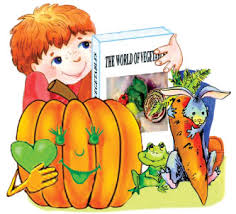 Why is healthy eating important for a child?
Why is healthy eating important for a child?
Many children are being diagnosed with high
cholesterol, or as overweight or obese. These conditions can cause many
health problems for your child, such as diabetes and high blood
pressure. These conditions can affect your child now and later as an
adult.
By helping your child establish a healthy diet and regular exercise,
you can reduce his or her risk of experiencing these health problems.
 How can I help the child eat right?
How can I help the child eat right?
Set an example
for your child. If you prepare nutritious foods for your family and eat
healthy foods yourself, your child will eat healthier, too.
Make sure to provide a variety of foods, so your family gets all the
vitamins and minerals their bodies need to function properly.
What are some examples of healthy meals?
Breakfast: The first meal of the day is a good time to give
your child foods that are high in fiber. Whole-grain breads, cereals,
fruit, low-fat or nonfat cheeses and yogurt are also good breakfast
foods. Use skim or low-fat milk.
Fruit juice is usually high in calories and sugars and has fewer nutrients than whole fruit (fresh or canned).
What snacks are good for the child?
Fruits, vegetables, whole grains and low- or nonfat dairy also make
good nutritious snacks for children. Here are some ideas for ways to
serve these foods to your kids:
Fruits:
- Small pieces of fruit stirred into nonfat yogurt
- Strawberries
- Raisins
- Grapes
- Pineapple chunks
- Orange or grapefruit sections
- Bananas cooked lightly in apple juice
- Apple slices with all natural peanut butter
- Dried fruit mixes
- Carrot sticks
- Celery sticks with all natural butter
- Raw broccoli and cauliflower florets with a low-fat dip or salsa
- Cherry tomatoes
- 1% fat or fat-free cottage cheese or ricotta cheese
- Water-packed tuna mixed with fat-free mayonnaise on top of celery sticks or whole-grain crackers
- Fat-free yogurt topped with sunflower seeds, chopped dried fruit or a spoonful of oat bran
- Unsalted almonds mixed with dried cranberries
- Cereals or cereal bars that are low in sugar and fat, and high in fiber and protein
- Whole-grain crackers, breads or bagels
- Fat-free frozen yogurt
- Juice bars
- Sherbet and sorbet
Please spare a minute to provide us your feedback!!!


No comments:
Post a Comment